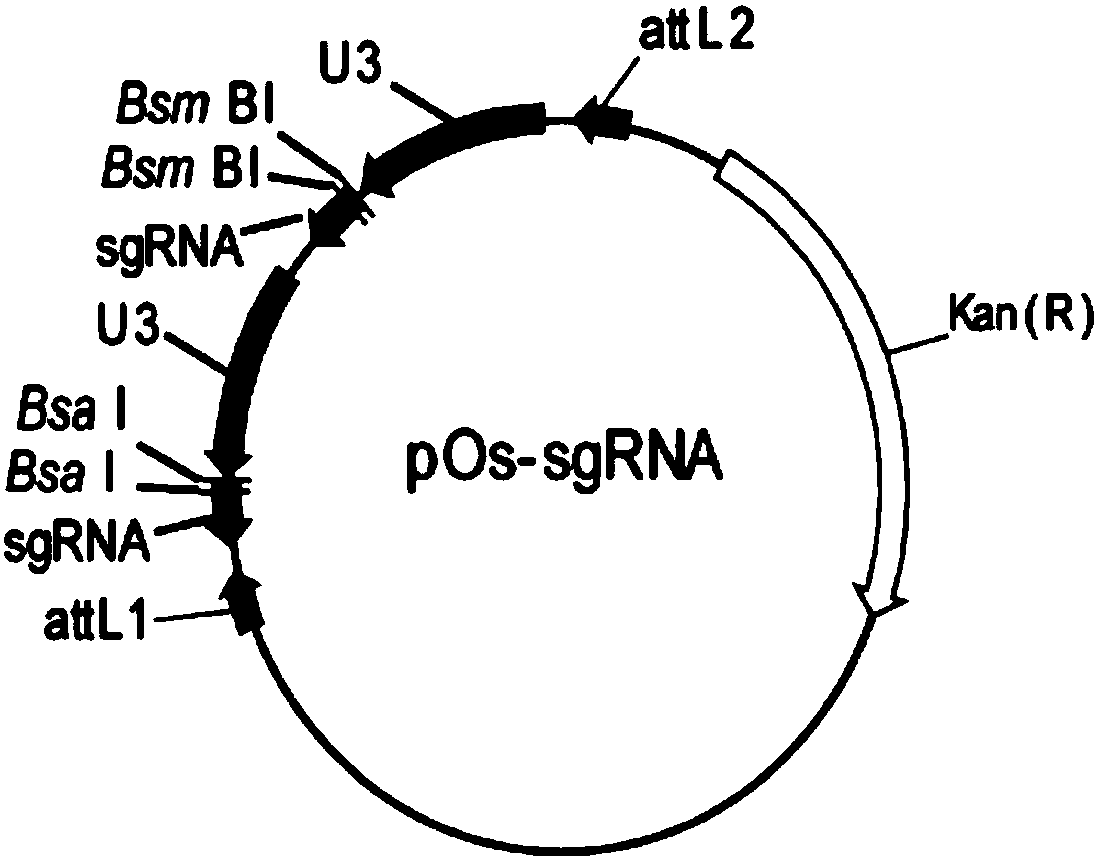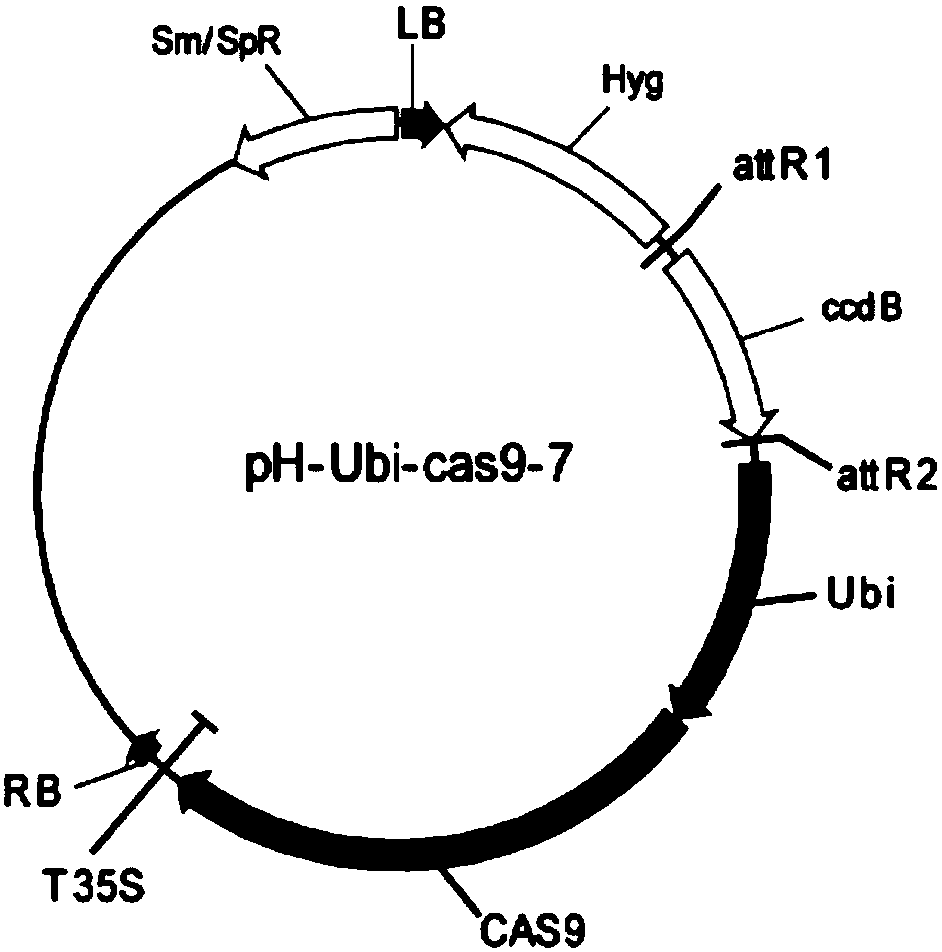Breeding method for reducing rice seed cadmium content
A rice grain and content technology, applied in the field of plant ecology and agriculture, can solve the problems of unspecified gene silencing, unspecified site mutation, and inability to realize mutants, so as to improve cadmium accumulation traits, avoid safety hazards, and retain The effect of excellent characteristics
- Summary
- Abstract
- Description
- Claims
- Application Information
AI Technical Summary
Problems solved by technology
Method used
Image
Examples
Embodiment 1
[0050] In the present embodiment, a kind of breeding method that reduces cadmium content of rice grain specifically comprises the following steps:
[0051] (1) Cloning the full length of the exon of OsNCX8 of the rice receptor material, and sequencing;
[0052] Design specific primer sequences to clone the full length of the exon of OsNCX8 of the rice receptor material and sequence; the primer sequence is: F1: 5'-ATGGCGCTCCTGCGCAGGCGG-3', which is shown in SEQ ID NO: 2; R1: 5' -CTATGCTGGCCACCAGGAGT-3', which is represented by SEQ ID NO:3. Cloning and sequencing obtained the full-length sequence of the NCX8 gene of different rice varieties such as Nipponbare, 9311, and Takata. Sequencing found that the gene sequence had no base difference, indicating that the gene was highly conserved during the evolution process. The full-length sequence of the gene is as follows. Shown as SEQ ID NO:1:
[0053] ATGGCGCTCCTGCGCAGGCGGGGGTACAGTGCCGCCGTCCCCAGCGCCTGCTGCTTCCTCCTCCTGCTGCTCGTCCTCTCC...
PUM
 Login to View More
Login to View More Abstract
Description
Claims
Application Information
 Login to View More
Login to View More - R&D
- Intellectual Property
- Life Sciences
- Materials
- Tech Scout
- Unparalleled Data Quality
- Higher Quality Content
- 60% Fewer Hallucinations
Browse by: Latest US Patents, China's latest patents, Technical Efficacy Thesaurus, Application Domain, Technology Topic, Popular Technical Reports.
© 2025 PatSnap. All rights reserved.Legal|Privacy policy|Modern Slavery Act Transparency Statement|Sitemap|About US| Contact US: help@patsnap.com



